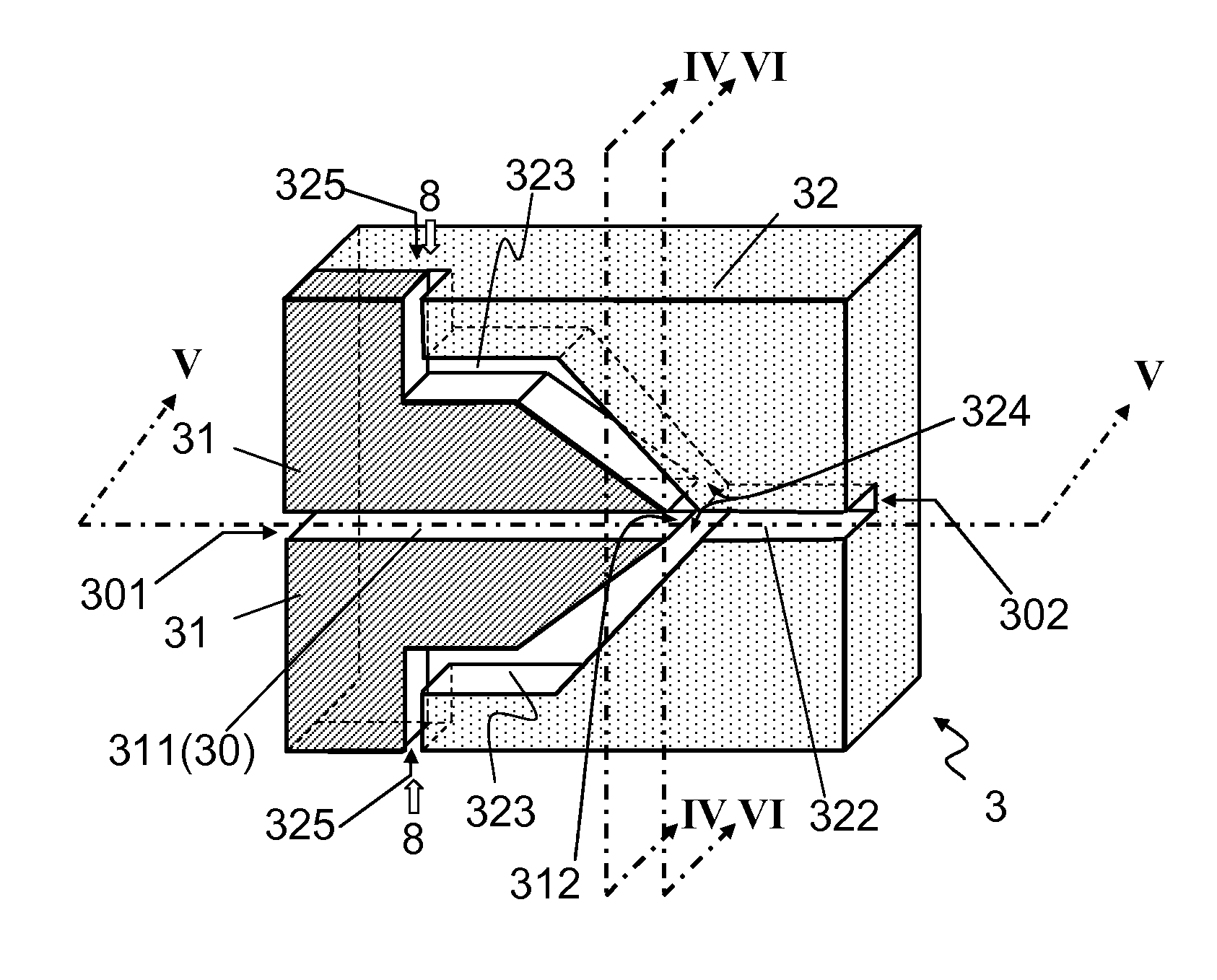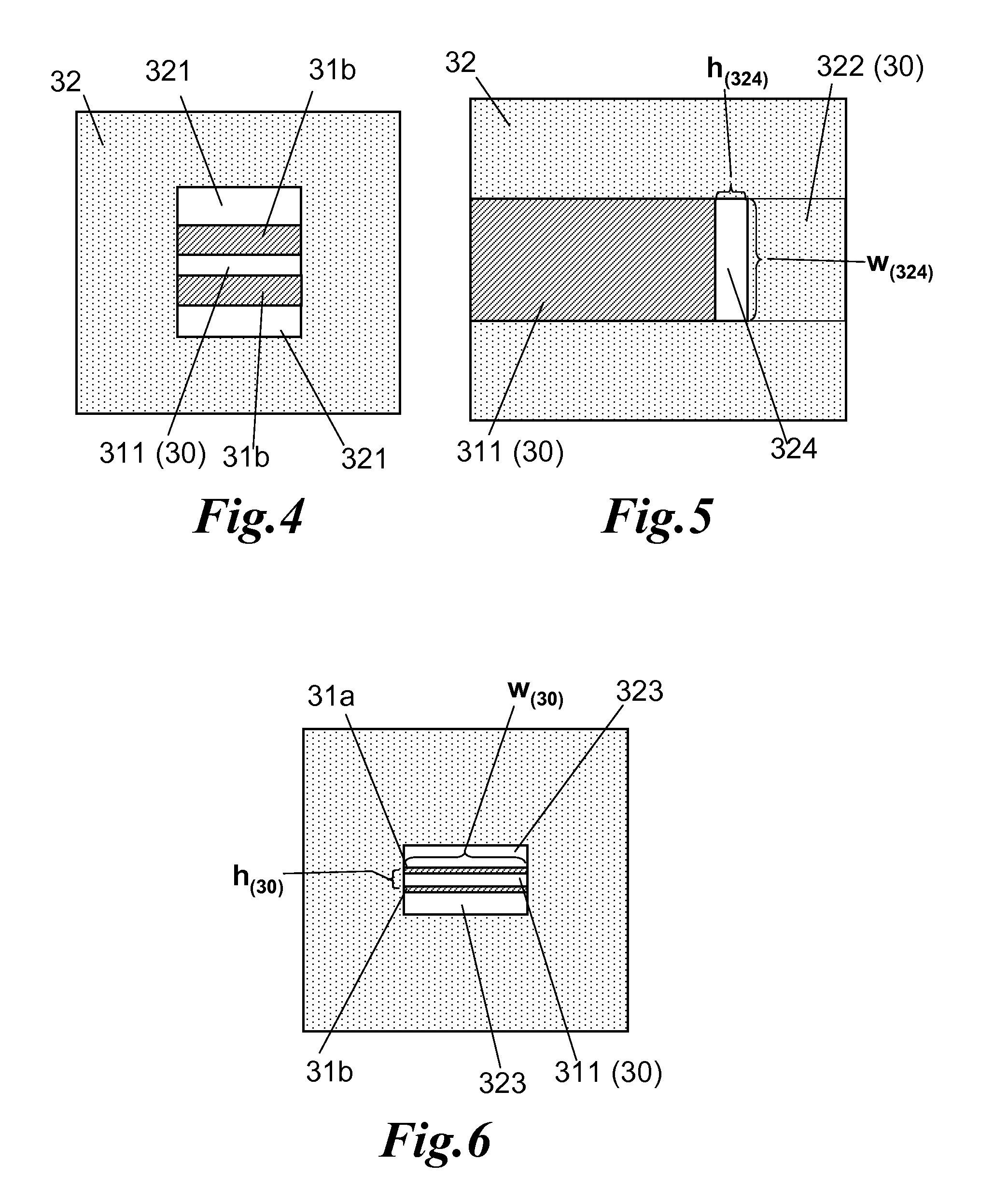Impregnation Assembly and Method for Manufacturing a Composite Structure Reinforced with Long Fibers
- Summary
- Abstract
- Description
- Claims
- Application Information
AI Technical Summary
Benefits of technology
Problems solved by technology
Method used
Image
Examples
example 1
[0151]The impregnation system according to the present invention has been used to impregnate continuous fibers with a thermoplastic polymer at high line speed and provide a composite structure in which the reinforcing continuous fibers are uniformly distributed.
[0152]Commercial glass fiber direct roving (GFDR) SE4220 from 3B-Fibreglass was used as glass fiber strand input, made up of 19μ diameter filaments giving tex (g / km) of 3000. Each GFDR was placed on a free rotating disc mounted on a table to enable easy strand pulling. The unwinding of the GFDR was from outside to avoid any twists during unwinding. Total of six direct roving were used simultaneously for impregnation.
[0153]A spreader assembly unit according to the present invention was arranged in six channels, enabling six inlets for glass fiber strands from six direct rovings as shown in FIGS. 37 to 45. Each strand went through one inlet entrance of 6 mm×0.5 mm, which was also the start of the rectilinear part of the channel...
example 2
[0156]Like in example 1, same spreader assembly and impregnation die according to the invention have been used except that the impregnating substance was a proprietary Polyolefin composition with MFR around 15 g / 10 min (190° C., 2.16 kg) with Mp around 128° C. The extruder was set to supply around 245-250 cm3 / min of molten thermoplastic feed to the impregnation die attached to its exit and fiber puller speed of 20 m / min. After passing over the two ceramic rolls, maintained at 250° C., a tape with average width of 65 mm and average thickness around 0.29 mm after cooling was obtained with a glass content of around 62% by wt. The microscopic (Phenom Microscope that was coupled high quality scanning electron microscope with optical camera from FEI Company, USA) pictures reveal good fiber dispersion within the thermoplastic matrix resin as shown in FIG. 51.
example 3
[0157]Like Example 1, the same impregnation die has been used but the spreader assembly of the invention was chosen with four channels to give a spread fiber band width of 60 mm. Thus, four strands of glass fiber direct roving were used. The extruder was set to supply around 285-290 cm3 / min of molten thermoplastic feed to the impregnation die attached to its exit and fiber puller speed of 30 m / min. After passing over the two ceramic rolls, maintained at 250° C., a tape has been obtained that showed an average width of 46 mm and an average thickness of around 0.3 mm after cooling, with a glass content around 58% by wt. The microscopic (Phenom Microscope that was coupled with high quality scanning electron microscope with optical camera from FEI Company, USA) pictures reveal good fiber dispersion within the thermoplastic matrix resin as shown in FIGS. 52 and 53.
PUM
| Property | Measurement | Unit |
|---|---|---|
| Angle | aaaaa | aaaaa |
| Angle | aaaaa | aaaaa |
| Angle | aaaaa | aaaaa |
Abstract
Description
Claims
Application Information
 Login to View More
Login to View More - R&D
- Intellectual Property
- Life Sciences
- Materials
- Tech Scout
- Unparalleled Data Quality
- Higher Quality Content
- 60% Fewer Hallucinations
Browse by: Latest US Patents, China's latest patents, Technical Efficacy Thesaurus, Application Domain, Technology Topic, Popular Technical Reports.
© 2025 PatSnap. All rights reserved.Legal|Privacy policy|Modern Slavery Act Transparency Statement|Sitemap|About US| Contact US: help@patsnap.com



